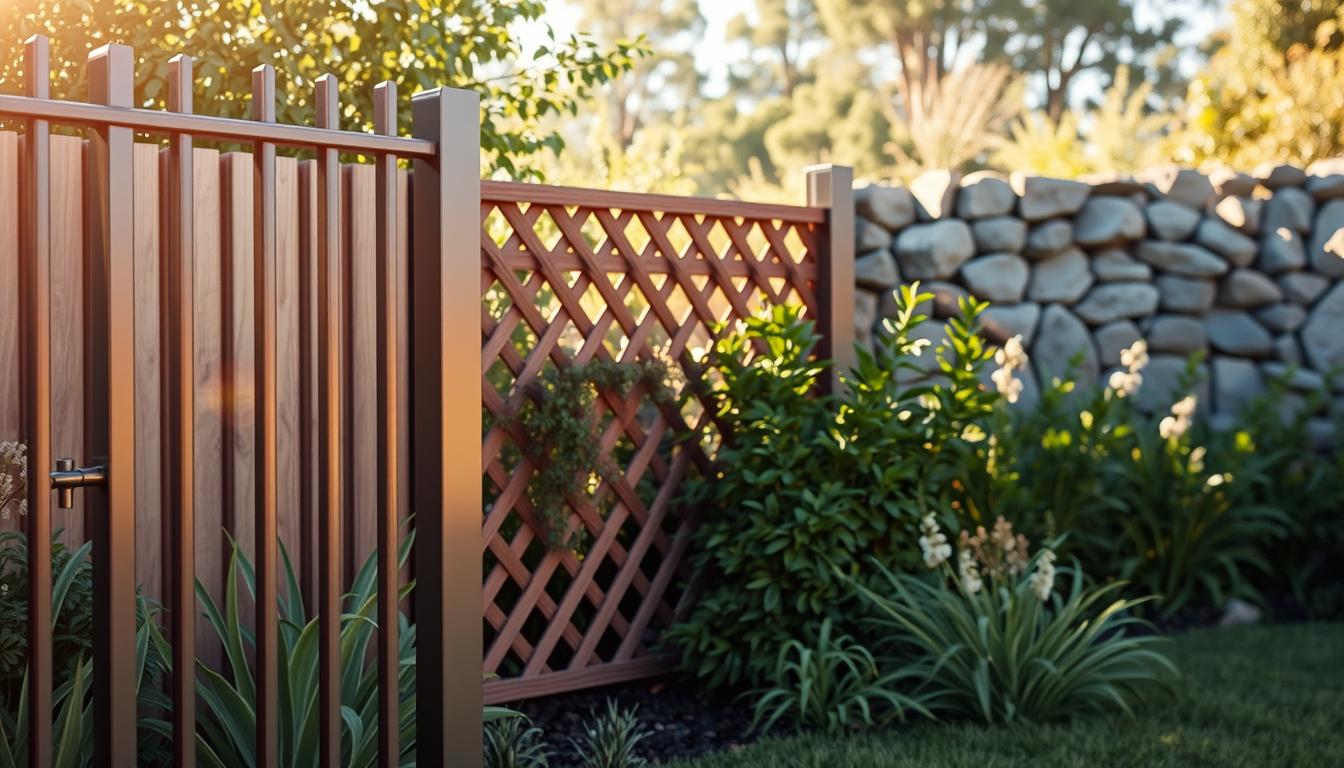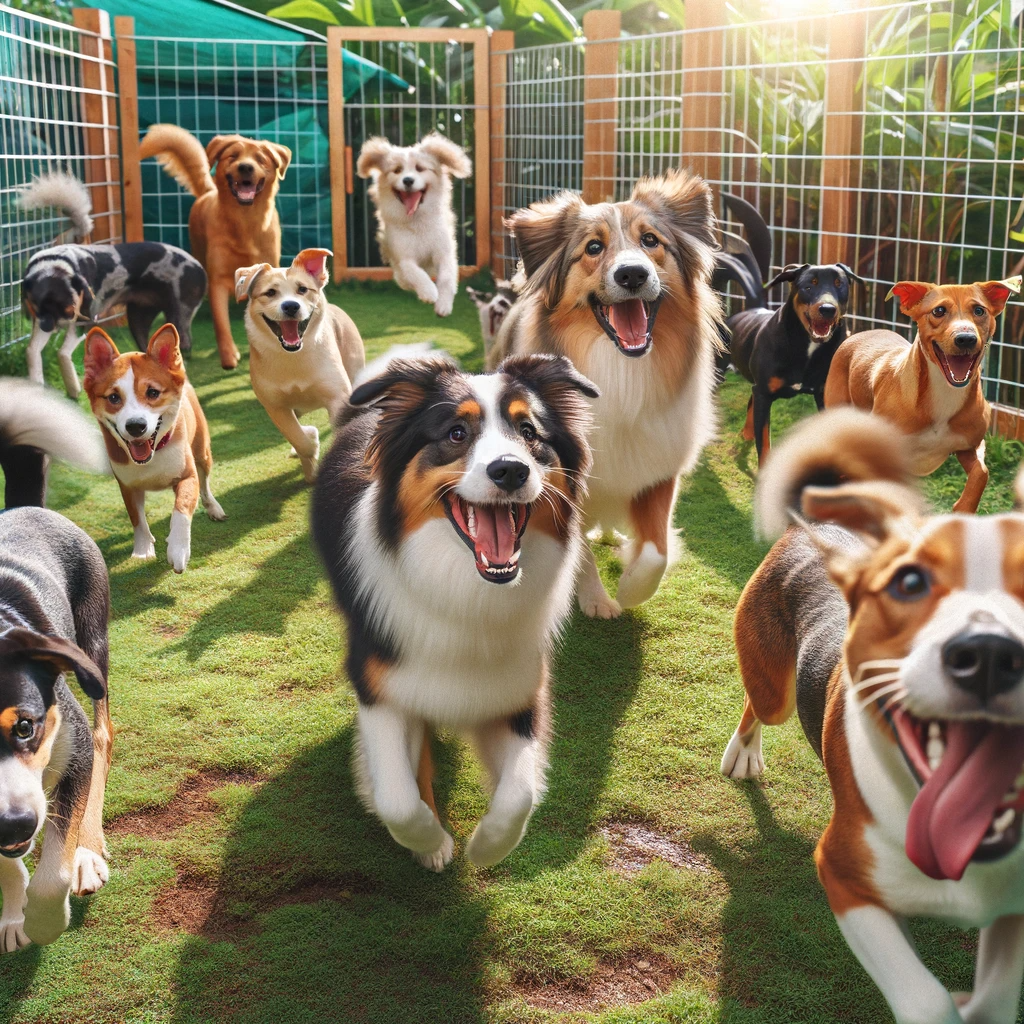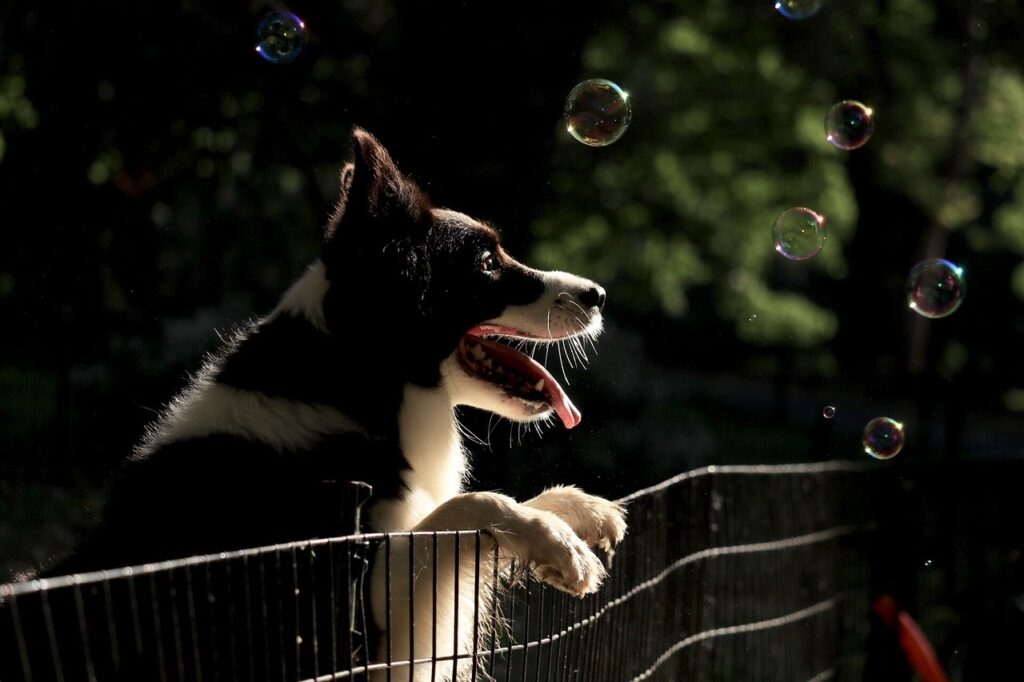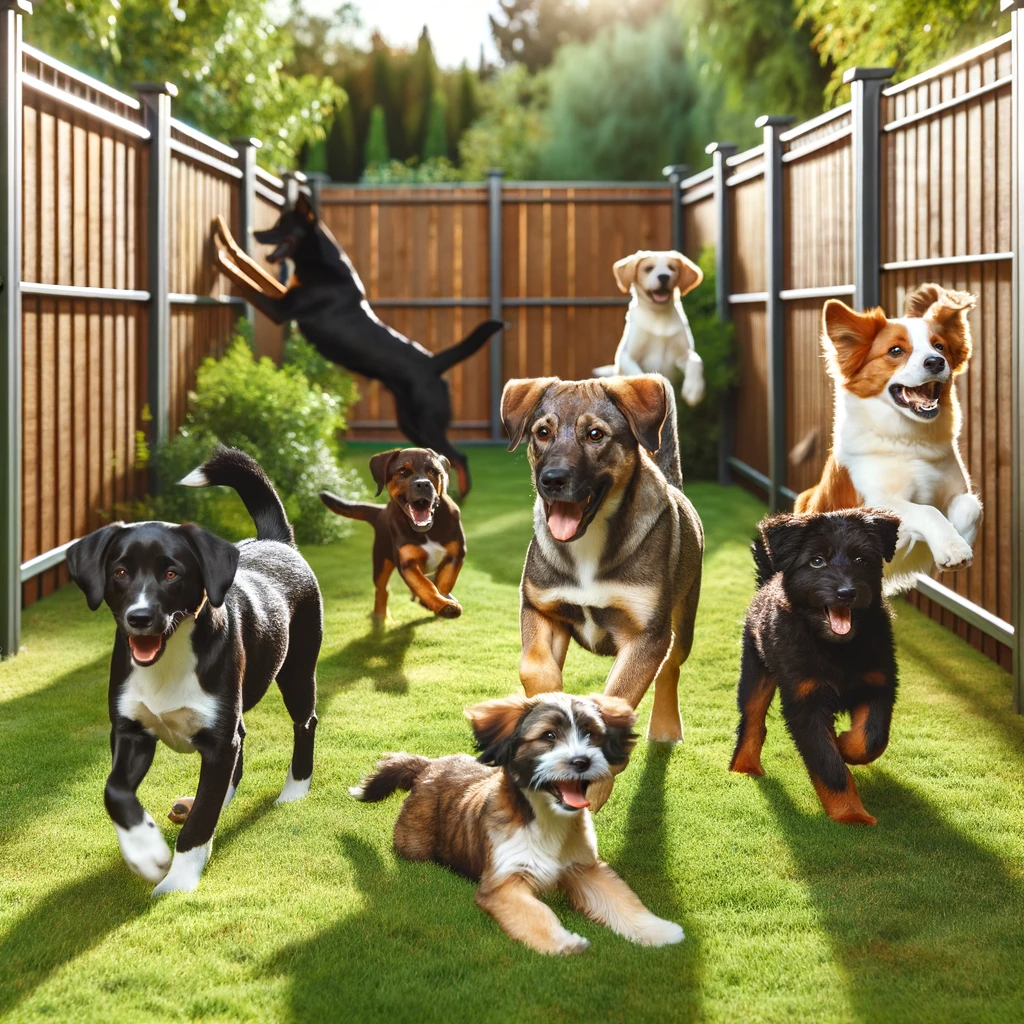Disclosure: As an Amazon Associate, I earn from qualifying purchases. This comes at no extra cost to you but helps support our site and content.
Keeping your furry friend safe while maintaining your bank account’s health can feel like an impossible balancing act. As dog owners, we want security without the sticker shock that often comes with professional fence installation. The good news? You don’t need fancy tools or contractor fees to create a safe boundary for your pup. Whether you’re working with spare change or have a bit more to invest, these dog fence ideas offer solutions that fit your lifestyle, property, and most importantly—your budget.

1. The Classic Picket Fence

The picket fence remains a timeless choice for dog owners seeking both function and curb appeal. While it sits at a higher price point, its durability often makes it cost-effective in the long run. Most picket fences last 15-20 years with proper maintenance.
Advantages
- Classic aesthetic that complements most home styles
- Excellent visibility to monitor your dog while they’re outside
- Sturdy enough for medium-sized breeds
- Can be DIY-installed with basic carpentry skills
Disadvantages
- Higher initial investment (materials run $15-25 per linear foot)
- Requires regular maintenance (painting/staining)
- May not be suitable for jumpers or larger breeds
- Installation can be labor-intensive
For smaller dogs, a 3-foot picket fence usually provides adequate containment. Larger breeds or athletic jumpers might require 4-5 feet in height. Consider adding a dig-proof barrier along the bottom if your dog enjoys excavation projects.
🛠️ What You’ll Need:
2. DIY Pallet Fence

If your budget is tight but your DIY spirit is strong, pallet fencing offers perhaps the most economical solution. Many businesses give away pallets for free, turning potential waste into a functional dog boundary.
Creating a pallet fence requires minimal tools—just a hammer, nails, and some elbow grease. Start by collecting uniform pallets, remove any splintered wood or protruding nails, and secure them together using 2x4s as connecting posts. For added stability, sink the support posts about 2 feet into the ground.
Advantages
- Extremely budget-friendly (often free materials)
- Eco-friendly repurposing of materials
- Customizable height based on pallet arrangement
- Rustic aesthetic that works well in country settings
Disadvantages
- Shorter lifespan (3-5 years without treatment)
- Requires thorough inspection for nails/splinters
- Less uniform appearance than commercial options
- May need reinforcement for larger dogs
For longevity, consider treating the wood with pet-safe sealant. This simple step can extend your pallet fence’s life by several years while protecting it from moisture damage.
🛠️ What You’ll Need:
3. Chicken Wire Fence

For smaller dogs or puppies, chicken wire provides an affordable containment solution that’s quick to install. While not suitable for determined diggers or larger breeds, it creates an effective boundary for well-behaved small dogs.
Installation is straightforward: set wooden posts every 4-6 feet, stretch the chicken wire between them, and secure with staples or fence clips. The entire project can typically be completed in a weekend, even by novice DIYers.
Advantages
- Very affordable ($1-2 per linear foot for materials)
- Lightweight and easy to handle during installation
- Nearly invisible from a distance, maintaining views
- Can be installed quickly with minimal tools
Disadvantages
- Not suitable for larger or determined dogs
- Shorter lifespan (2-3 years typically)
- Susceptible to damage from weather and rust
- Requires regular inspection for holes or weak spots
For added durability, consider using vinyl-coated chicken wire, which resists rust and typically lasts 1-2 years longer than standard galvanized options.
Planning Your Perfect Dog Fence?
Don’t waste money on the wrong materials or design! Our free Dog Fence Planning Checklist helps you avoid costly mistakes by matching the right fence to your dog’s behavior, your yard’s conditions, and your budget constraints.Download Free Checklist
🛠️ What You’ll Need:
4. Electric Invisible Fence

For homeowners who prioritize aesthetics or face HOA restrictions, invisible electric fences offer a containment solution without visual barriers. These systems use a buried wire that creates a boundary your dog learns not to cross.
The system works by sending a warning beep through a special collar when your dog approaches the boundary. If they continue, a mild static correction discourages boundary crossing. Most dogs learn the boundaries within 2-3 weeks of consistent training.
Advantages
- Preserves landscape views and aesthetics
- Works on irregular or large properties
- No physical barrier to maintain or paint
- Can cover several acres depending on the system
Disadvantages
- Higher upfront cost ($200-800 depending on coverage)
- Requires consistent training for effectiveness
- Doesn’t prevent other animals from entering your yard
- Battery replacement needed for collar
When considering an invisible fence, remember that some dogs respond better than others. Highly motivated or stubborn breeds might be willing to endure the correction to chase squirrels or greet passing dogs. Always pair with proper training for best results.
🛠️ What You’ll Need:
5. Garden Mesh Roll

Garden mesh offers a step up from chicken wire in durability while remaining budget-friendly. These welded wire panels come in various heights and mesh sizes, making them adaptable to different dog breeds and escape tendencies.
Installation follows the same principle as chicken wire but results in a sturdier barrier. Set posts every 6-8 feet, attach the mesh using U-nails or fence staples, and consider adding a top rail for extra stability against jumping or leaning.
Advantages
- More durable than chicken wire (5-10 year lifespan)
- Moderate cost ($3-7 per linear foot for materials)
- Available in various heights for different dog sizes
- Maintains visibility through the fence
Disadvantages
- Requires more support posts than solid fencing
- Can be climbed by determined dogs
- May need additional bottom securing for diggers
- Less attractive than decorative options
For dogs who dig, extend the mesh about 12 inches below ground level, bending it outward in an L-shape. This creates an underground barrier that discourages tunneling escape attempts.
🛠️ What You’ll Need:
6. Chain Link Fence

Chain link fencing represents the commercial standard for dog containment, offering durability and security that can last decades with minimal maintenance. While not the most budget-friendly option upfront, its longevity makes it cost-effective over time.
Professional installation is recommended for chain link, though determined DIYers can tackle the project with proper tools and patience. The key to a successful chain link installation lies in properly setting corner posts in concrete and maintaining proper tension throughout the fence line.
Advantages
- Exceptional durability (20+ year lifespan)
- Effective for all dog sizes and breeds
- Low maintenance requirements
- Available in vinyl-coated options for better aesthetics
Disadvantages
- Higher cost ($10-20 per linear foot installed)
- Industrial appearance may not suit all properties
- Can be climbed by athletic dogs
- Installation requires specialized tools
For enhanced privacy and aesthetics, consider adding privacy slats to your chain link fence. These interwoven plastic strips come in various colors and can transform the industrial look while reducing visual stimulation for reactive dogs.
🛠️ What You’ll Need:
7. Recycled Material Fence

For the environmentally conscious dog owner on a tight budget, recycled material fencing offers both sustainability and savings. This approach transforms items destined for landfills into functional pet boundaries with unique character.
Sources for recycled fencing materials include construction site dumpsters (with permission), habitat restore centers, online marketplace free sections, and neighborhood cleanup days. Look for old doors, windows, lumber scraps, and even metal panels that can be repurposed.
Advantages
- Extremely budget-friendly (often just hardware costs)
- Environmentally responsible approach
- Creates unique, one-of-a-kind aesthetic
- Can be adapted to available materials
Disadvantages
- Requires creativity and basic construction skills
- May have inconsistent durability
- Time-intensive to source and prepare materials
- Can look haphazard without thoughtful design
When working with recycled materials, prioritize safety by removing all nails, sanding rough edges, and treating wood to prevent splinters. A cohesive paint color can unify disparate materials into a more intentional-looking design.
🛠️ What You’ll Need:
8. Expandable Plastic Pet Barriers

For temporary containment or renters who can’t install permanent fencing, expandable plastic barriers offer a portable solution. These modular systems can be quickly set up, reconfigured, and stored when not in use.
Most expandable barriers stand 24-36 inches tall, making them suitable for small to medium dogs without jumping tendencies. They’re particularly useful for creating temporary play areas, blocking off garden sections, or securing portions of your yard during outdoor gatherings.
Advantages
- No installation required—simply unfold and connect
- Portable and storable when not in use
- Ideal for renters or temporary situations
- Can be reconfigured to different shapes and sizes
Disadvantages
- Not suitable for larger or athletic dogs
- Limited height options available
- Less durable than permanent fencing
- Can be moved or knocked over by determined dogs
To increase stability, consider using garden stakes or tent pegs to anchor the barriers to the ground. This simple addition significantly improves resistance to pushing or leaning.
🛠️ What You’ll Need:
9. Wooden Slat Fence

For homeowners seeking a modern aesthetic with excellent containment properties, horizontal wooden slat fencing offers contemporary style. While requiring a higher investment, these fences add significant property value while keeping your dog secure.
Unlike traditional vertical pickets, horizontal slats create clean lines that complement modern architecture. The design allows for customized spacing between slats—tighter at the bottom to prevent small dogs from squeezing through, and potentially wider at the top for views and airflow.
Advantages
- Contemporary, high-end aesthetic
- Excellent privacy when slats are closely spaced
- Highly customizable in height and spacing
- Adds significant property value
Disadvantages
- Higher cost ($20-35 per linear foot for materials)
- Requires precise installation for clean lines
- Horizontal design may be climbable for some dogs
- Needs regular sealing/staining for longevity
Cedar and redwood are excellent choices for slat fencing due to their natural resistance to insects and decay. Though more expensive initially, they require less maintenance and typically last longer than pressure-treated pine.
🛠️ What You’ll Need:
10. Portable Dog Playpen Fence

For dog owners who need flexibility or have limited outdoor space, portable playpens provide supervised containment without permanent installation. These metal panel systems typically connect with pins or latches to form enclosures of various shapes and sizes.
Most portable playpens come in panel heights ranging from 24-48 inches, accommodating different dog sizes. They’re ideal for apartments with small patios, camping trips, or creating safe zones within larger unfenced areas.
Advantages
- Completely portable and storable
- No installation or property modification required
- Can be used indoors or outdoors
- Expandable with additional panels
Disadvantages
- Limited size compared to yard fencing
- Requires supervision for jumpers or climbers
- Not suitable as a permanent solution
- May rust if left outdoors permanently
Look for playpens with ground stakes for outdoor stability. For indoor use on hard floors, rubber feet or pads can prevent scratching and sliding while protecting your surfaces.
🛠️ What You’ll Need:
Recommended Tools to Build Your Dog Fence

Post Hole Digger
Essential for setting fence posts properly. Makes clean, precise holes for maximum stability. Works in most soil types and saves hours of shovel work.

Cordless Drill
Speeds up fence assembly dramatically. Drives screws in seconds and makes pilot holes to prevent wood splitting. Rechargeable battery lasts through most fence projects.

48-inch Level
Ensures your fence posts and rails are perfectly straight. Prevents the leaning and sagging that occurs with eyeball estimation. Essential for professional-looking results.
Final Tips for Picking the Right Fence

The perfect dog fence balances three critical factors: your dog’s behavior, your property characteristics, and your budget constraints. Consider your dog’s size, jumping ability, and determination level when selecting height and materials. A fence that works perfectly for a Chihuahua might be easily cleared by a Border Collie.
Your yard’s terrain also impacts fence selection. Sloped properties may require stepped fencing or custom solutions to eliminate gaps. Soil composition affects post stability—sandy soils might need deeper post holes and more concrete for proper anchoring.
Remember that even budget-friendly options can be effective when properly installed and maintained. Often, a combination approach works best—perhaps a more expensive fence in visible front areas with economical options in less prominent sections.
Ready to Plan Your Perfect Dog Fence?
Our comprehensive Dog Fence Planning Checklist walks you through every consideration—from measuring your yard correctly to selecting materials that match your dog’s behavior patterns. Don’t waste money on the wrong solution!Download Free Checklist
Whichever fence option you choose, remember that physical barriers work best when combined with proper training. Teaching boundary respect and basic commands enhances any containment system and builds a stronger bond with your four-legged friend.





